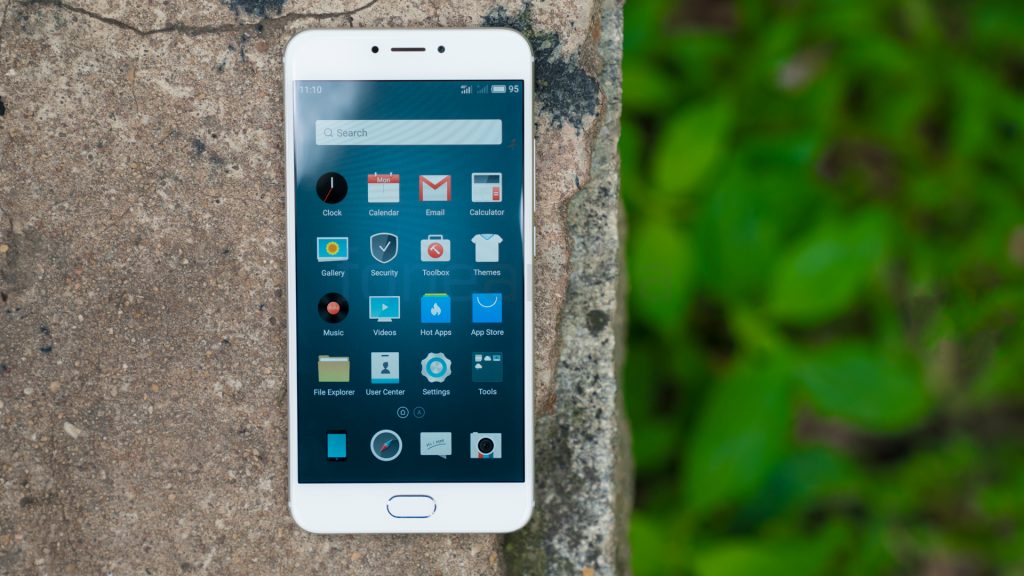
The Meizu MX6 is the successor to the MX5 from last year which was considered to be a great value for money handset with all the bells and whistles. This time around, Meizu has focused on improving the design as well as concentrated on the finer details. Let us take a look at how the device turned out.
Unboxing
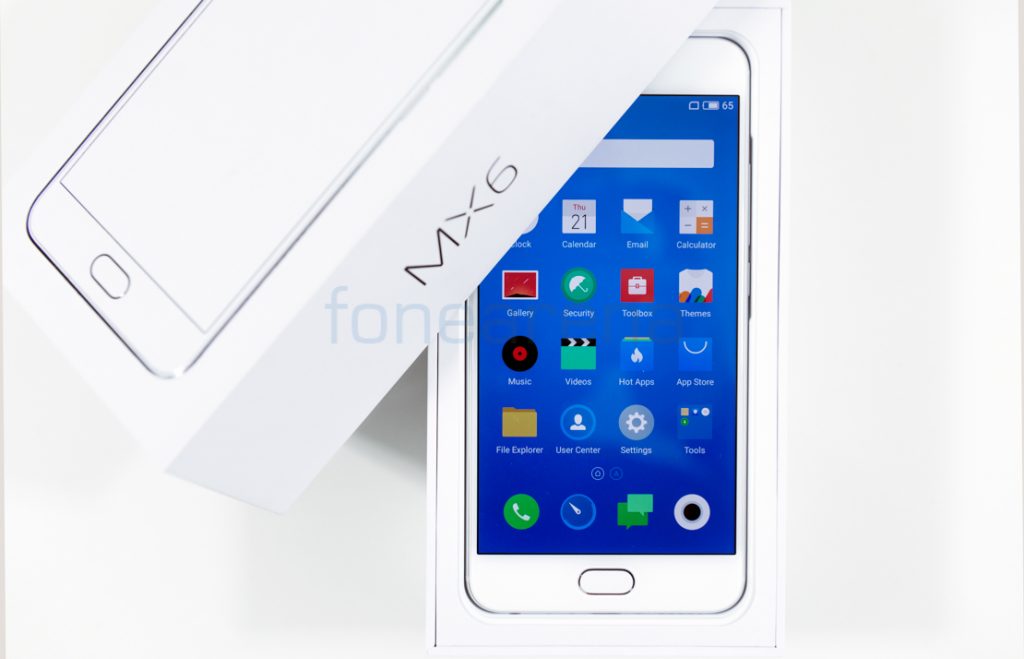
Here is the unboxing of the Meizu MX6.
- Meizu MX6 smartphone in silver color
- 2-pin charger
- USB Type-C cable
- SIM ejector tool
- User manual
Video Review
Design, Build Quality and Materials
The MX6 doesn’t really break free from traditional Meizu design. Any angle that you choose to look at the MX6 will only suggest that the smartphone is indeed a Meizu product. Up front, you have the usual mTouch button below the display that remains the only navigation key for the phone as other Meizu phones. The back too is made of metal and you have a design that is very similar to the previous generation MX5 in terms of the visual appeal. However, when it comes to the actual feel and handling, the predecessor and the MX6 are world’s apart.
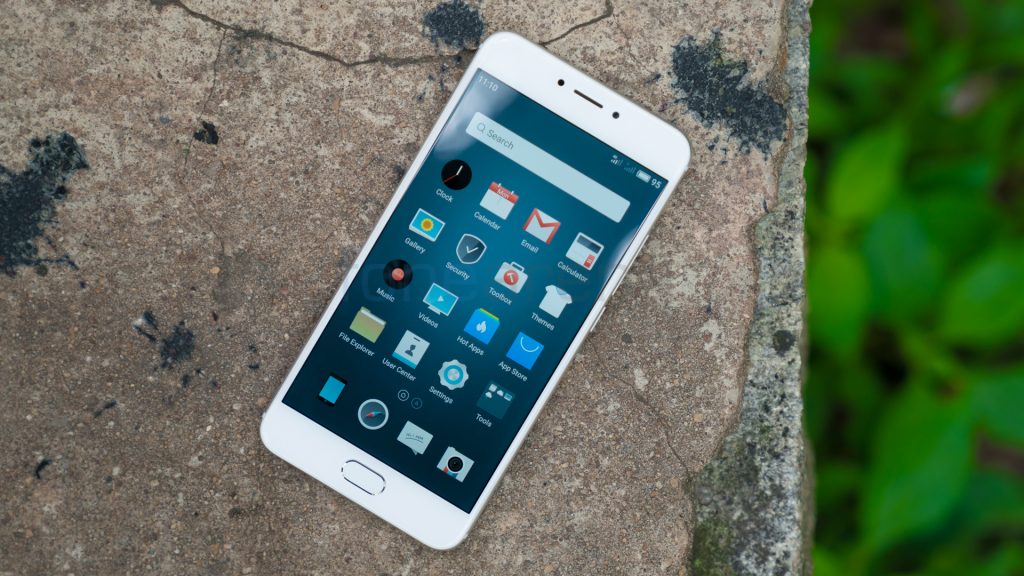
For starters, the MX6 has a much slimmer body that is not just easier to grasp and handle but also easier to pocket and feels effortless when using it. I couldn’t even recall the MX5 being a bulky smartphone, but when I tried the MX6, the difference was pretty tangible. Despite the reduction in thickness and the smartphone being lighter, the handset doesn’t feel cheap nor does it feel flimsy.
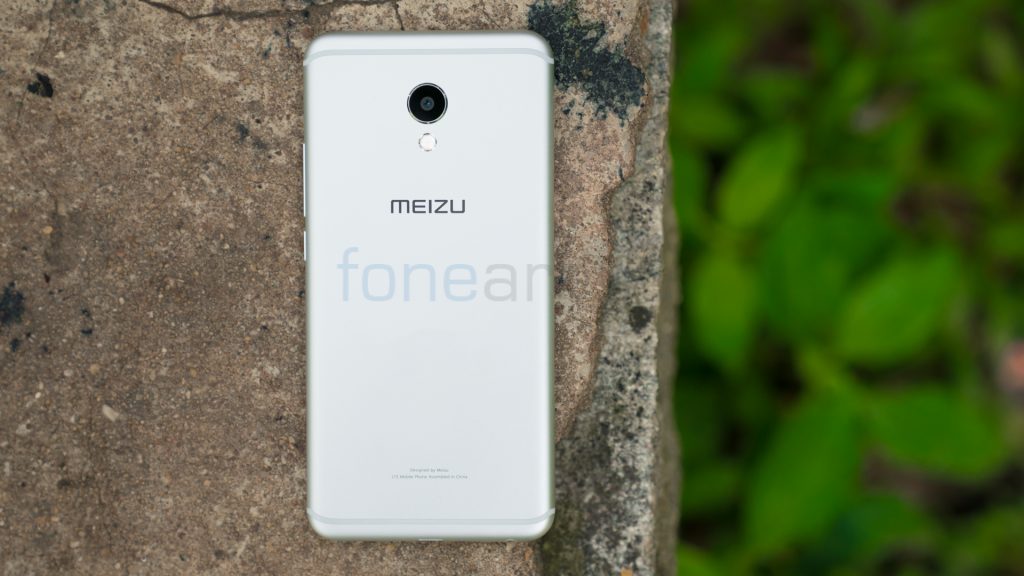
If anything, it feels more premium and robust. After the initial few minutes itself, you can tell that the smartphone is made of premium materials that won’t result in a “bendgate” situation. Most of the front is occupied by the 5.5” display and despite the reduction in the bezels at the sides, the top and bottom bezels are quite big. Below the display is the mTouch button as we explained earlier and above it is the earpiece, front facing camera as well as the ambient light and proximity sensors.
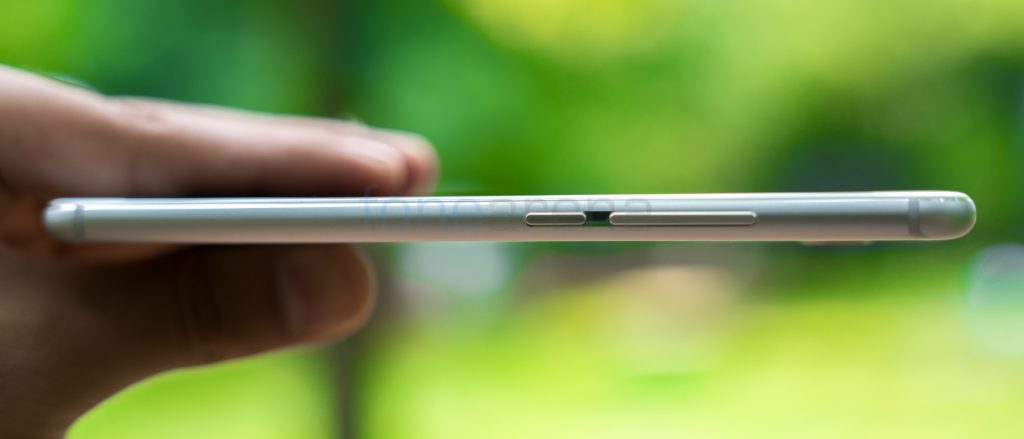
The right side of the device houses the volume rocker button and power key. Both these are well raised and offer great feedback when pressed. There isn’t any sort of engraving or groove that helps differentiate between the two sets of buttons but you will be able to ascertain their positions after spending a few minutes with the device itself. At the left side, near the top, you have the Hybrid DualSIM card slot.

While the top houses just the secondary microphone, things get busy at the bottom with the USB Type-C port, primary microphone, speaker grille and the 3.5mm audio jack. We are quite glad that Meizu didn’t ditch the dedicated audio jack in favour of the “superior” USB Type-C port to transmit audio.
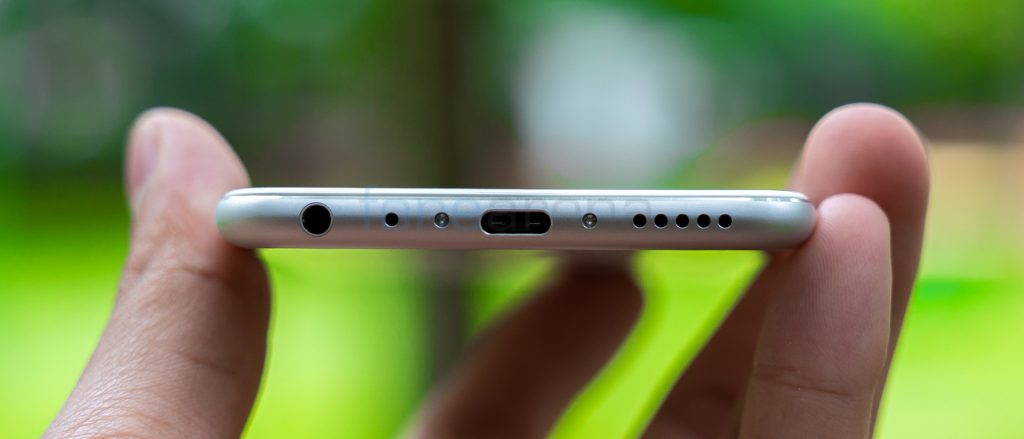
At the back, you have the camera unit as well as a dual-tone LED flash below it. The camera hump too has been reduced compared to the previous generation but it still exists. While it wouldn’t trouble you in your pocket, the hump is pronounced enough to cause scratches if you occasionally place it on rough surfaces. You also get a chrome ring on the outer edge of the camera unit and inner edge of the flash unit. There is a Meizu branding below the camera unit too.
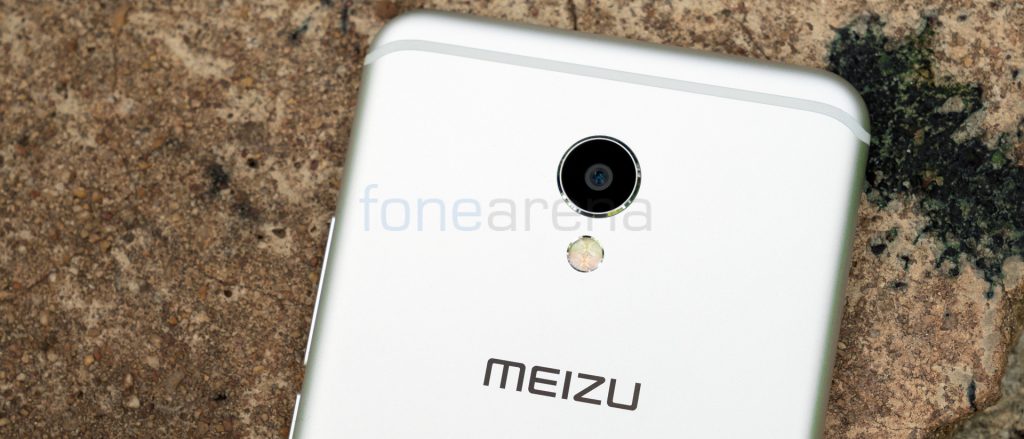
However, possibly the biggest change is perhaps the design of the antenna lines. The MX5 too had what we could call minimal antenna lines and it really didn’t stick out like a sore thumb like it does on some devices (iPhone 6s and 6s Plus included). The MX6 antenna lines are in fact perhaps more prominent compared to the MX5 but it does look more pleasing aesthetically. Rather than having two straight plastic inserts, there is a nice swooping curve to the antenna lines towards the sides of the phone. Sure, this doesn’t seem to be as well implemented as the antenna lines on the upcoming iPhone 7 series and its nowhere as good as the Asus Zenfone 3 which also features a metal unibody design. However, I prefer this look over the MX5 anyday.
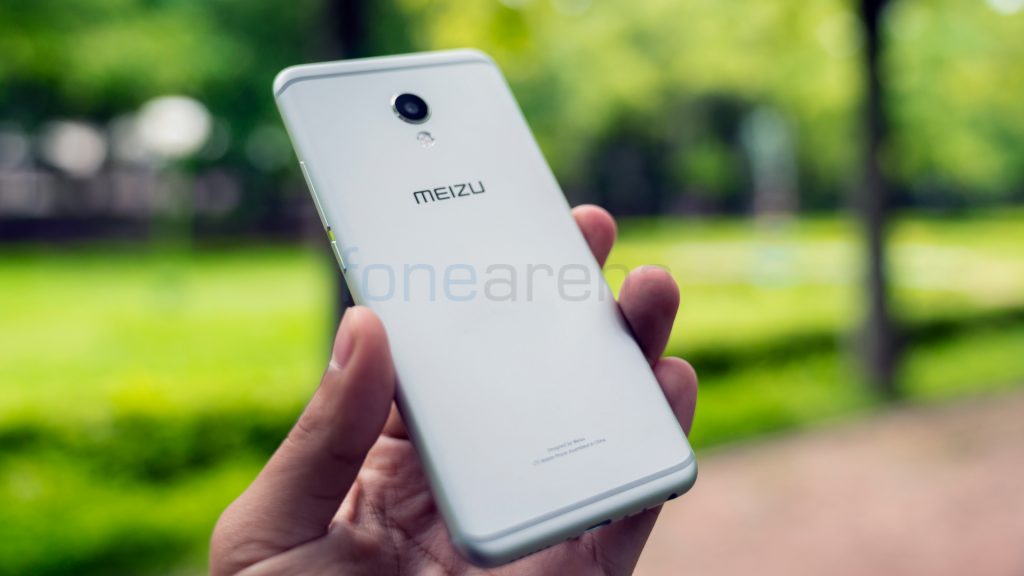
The device is pretty easy to handle despite being a 5.5 inch device and is easy to grip too. This is primarily due to the fact that the MX6 has really nice rounded corners and they have also nailed the merge between the glass at the front and the sides. In previous Meizu models, the glass up top was typically flat, then you have a huge chamfered edge around it, which looked good but disrupted the flow and then the sides which stuck out a bit. With the MX6, the front 2.5D curved glass tapers just the perfect amount to merge with the chamfered edge, which in turn merges with the sides. The chamfered edge this time around does what its supposed to by adding visual appeal rather than disrupting the design flow by just being a sharp bezel that runs all around the display.
The soft touch finish of the metal at the back too improves the handling. The back panel is non-removable since this is a unibody design and neither is the battery. The MX6 is available in Silver, Gold, Rose Gold and Grey Variant (Black Glass Up Front).
Display
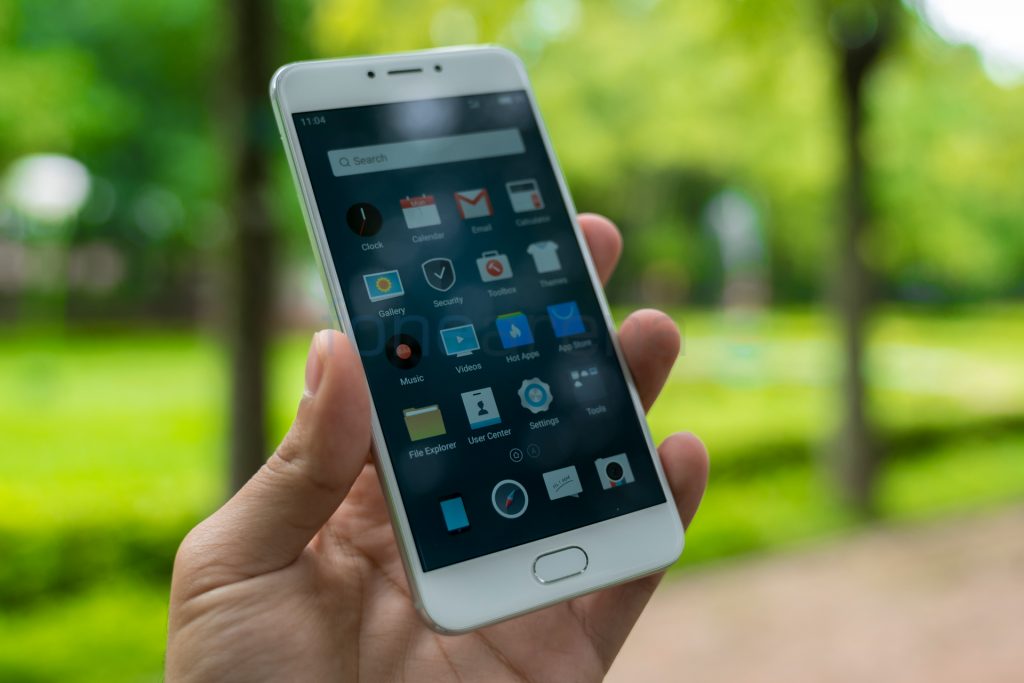
There’s something about Meizu displays that always stands out and manages to impressive you more and more with each new smartphone they release. I’m not sure if it’s the 2.5D curved glass or the colours/saturation or the viewing angles or brightness or a combination of them all. But the display is definitely beautiful to look at and use. It isn’t a record breaker in terms of pixel density or resolution since it is only a 1080p panel. But the display definitely looks good and you will love using it be it indoors or outdoors. The swipes are really smooth and the 2.5D glass gives a natural flow when using it. The glass is quite resistant to scratches as well and so far we haven’t really gotten any scratches on our unit.
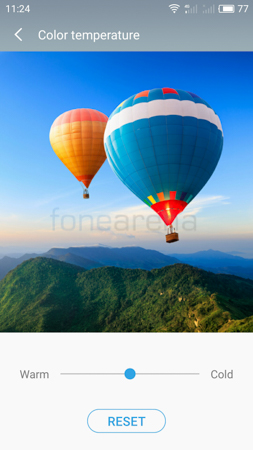
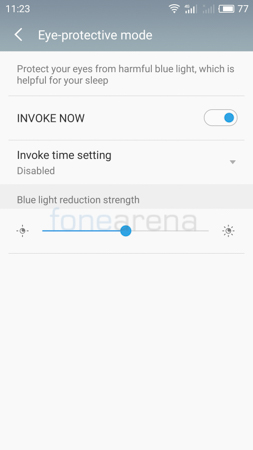
Meizu also gives different options in terms of customization to tweak and get the best experience possible out of the display. Users can adjust the colour temperature to be cooler or warmer based on their preference. Additionally, there is an eye-protective mode which cuts down the amount of blue light emitted by the screen. This would in turn reduce the amount of strain on your eyes and brain. This can either be manually enabled or users can set it from sunset to sunrise or even a custom time slot of their own choice.
Fingerprint Sensor
The MX6 features a fingerprint sensor on the home button which Meizu likes to call the mTouch key since it relies on a single button navigation method unlike other smartphones. The key is physically clickable and has a nice chamfered inner edge around it. It is sufficiently large too and feels good to rest your finger on it.
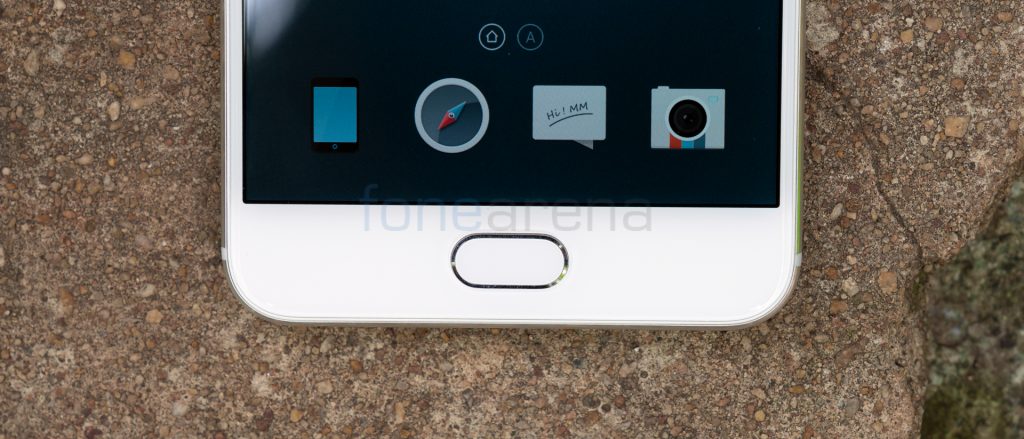
The fingerprint sensor is pretty accurate and while it isn’t the fastest on the market, detection and unlock speeds are pretty quick too. The smartphone needs to be woken up in order to unlock the phone so users will either have to press the home button or power key or double tap the display to wake up the phone first before proceeding to use the fingerprint scanner to unlock the phone. The fingerprint scanner also does a good job at recognizing your fingerprint even if your finger is a tad bit dirty but doesn’t do too well in case your finger is wet.
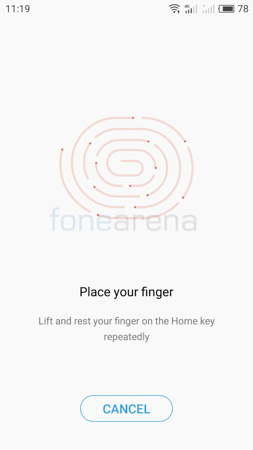
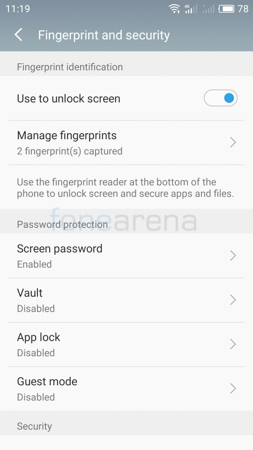
You can and need to setup a backup password, PIN or pattern in order to unlock the device in case the fingerprint scanner fails to recognize your fingerprint. Users can register upto 5 different fingerprints at a time.
Software and UI
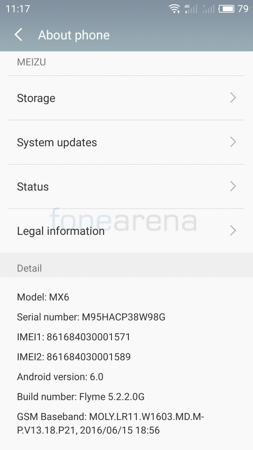
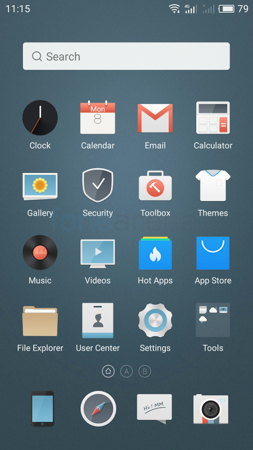
The Meizu MX6 comes with Android 6.0 Marhsmallow with Flyme 5.2.2.0G UI on top of it. As with other Meizu smartphones, the MX6 also relies on the single mTouch key to navigate through the phone. A tap on the home button takes you to the previous screen while a physical press of the key takes you to the homescreen. The recent apps screen can be brought up by just swiping upwards from the bottom of the screen.
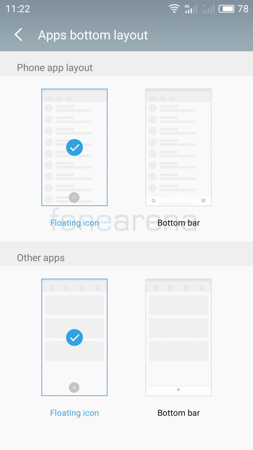
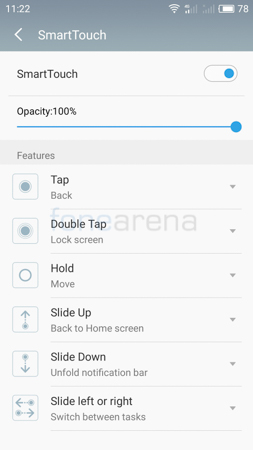
Just like that, the users get several other gestures to easily access the phone functions. These gestures are both screen off and screen off gestures and some can be customized as per your use cases. There is also a SmartTouch feature that you can enable in order to have a virtual home button of sorts. It can be assigned different functions such as navigating between menus, locking the screen etc. You can also adjust the position as well as the opacity.
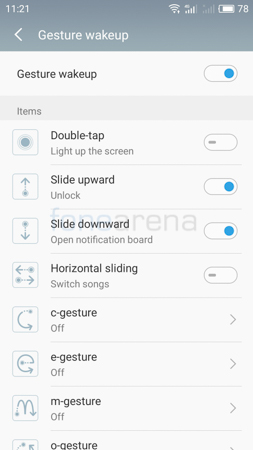
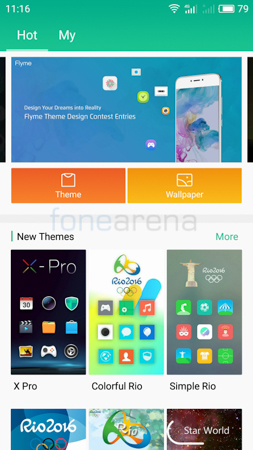
You can also choose the bottom layout for the default and 3rd party apps within the settings as well as choose what tapping the home key will do when typing. There is a theme store where users can go to in order to change their wallpapers or the entire look and feel of the UI such as colour palette, icons etc. The toolbox feature has useful tools such as a mirror, magnifier, compass etc. The security centre aims to keep your phone free of viruses and optimise it to perform as smooth as possible.
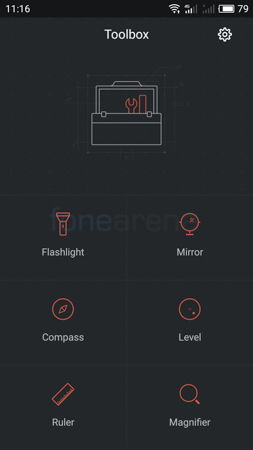

Calling and Messaging
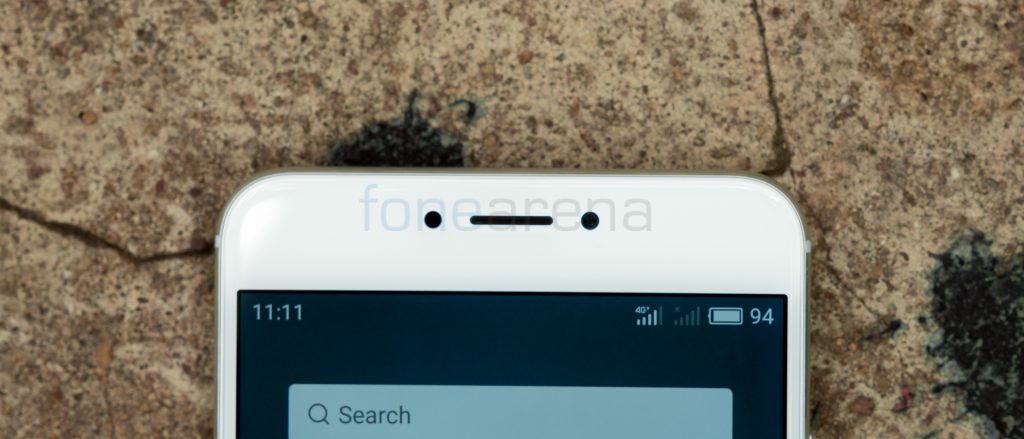
The MX6 has a nice and large dialpad that is ease to type and use. You can either enter the number directly or search for numbers within your contacts. Call quality is loud enough through both the earpiece and speaker. Thanks to the 2nd noise cancelling mic, your voice is also heard clearly by the party at the other end.

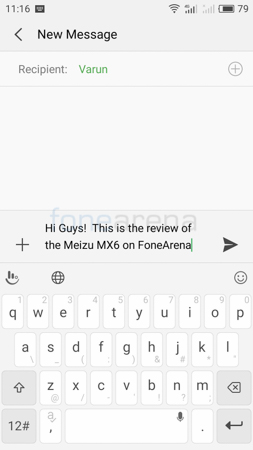
The default keyboard on the MX6 is the TouchPal keyboard which isn’t really my cup of tea. I would rather download and use something like SwiftKey or Google Keyboard since the layout of TouchPal isn’t quite intuitive. Since it is Android, that is luckily very easy to do and despite the keyboard not being so good in terms of layout, typing itself is a pleasurable experience on the MX6 thanks to the smooth screen that curves at the edges.
Storage, Connectivity and Performance
The MX6 comes with 32GB of on-board storage that is further expandable using microSD cards on the Hybrid DualSIM card slot. It supports 4G LTE as well.
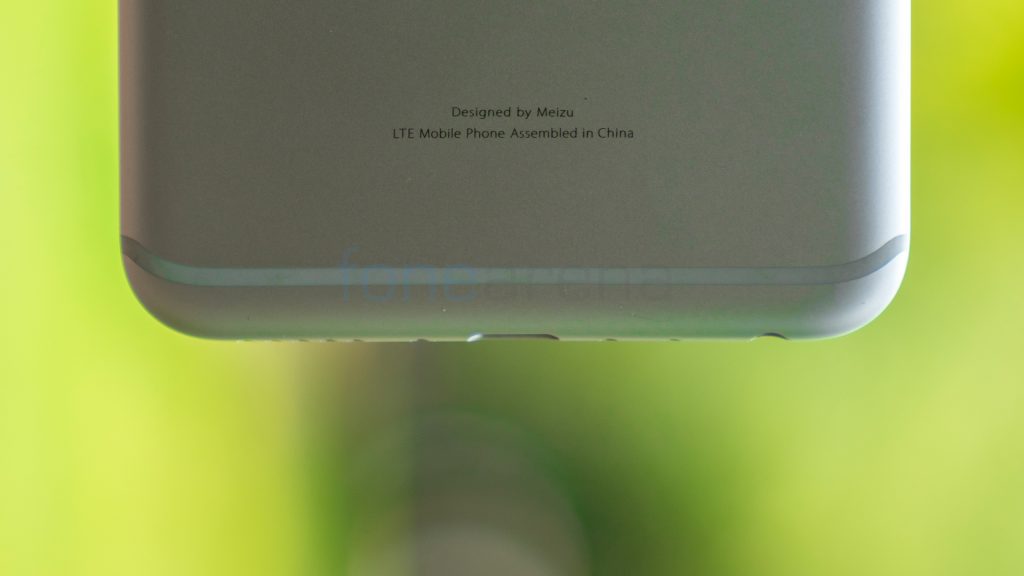
It has a USB Type-C port which also supports USB OTG functionality and additionally also has dual-band WiFi 802.11 a/b/g/n/ac as well as Bluetooth 4.1.
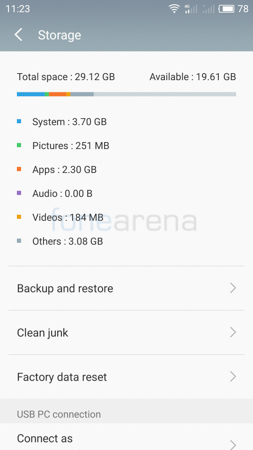
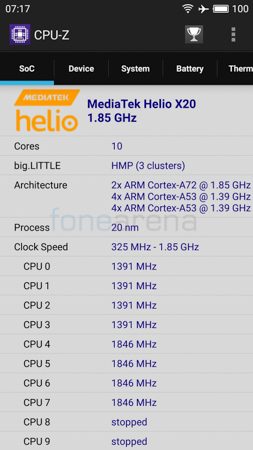
The device is powered by a deca-core Helio X20 processor from Mediatek (Dual-core 2.3 GHz Cortex-A72 & quad-core 1.9 GHz Cortex-A53 & quad-core 1.4 GHz Cortex-A53) along with 4GB of RAM. Performance is butter smooth as can be expected and the UI is easy to navigate through as well. Where it may fall a bit short is perhaps in terms of gaming performance where it could’ve been better. Here are some of the benchmarks.
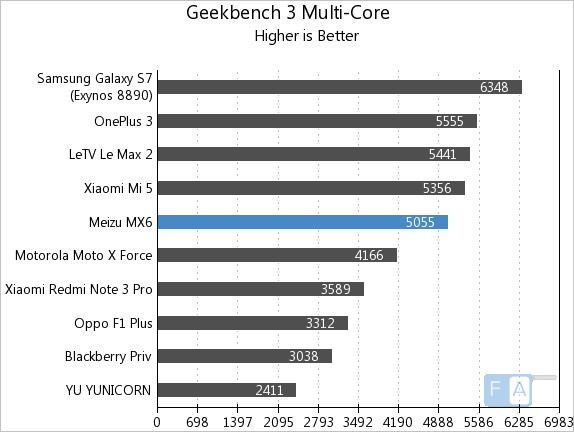
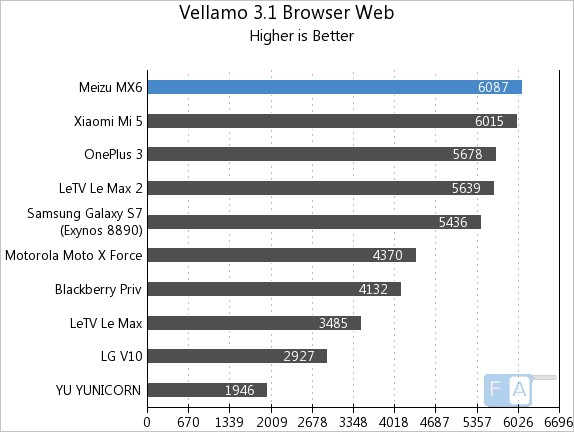
For the full fledged results, check out this post.
Camera
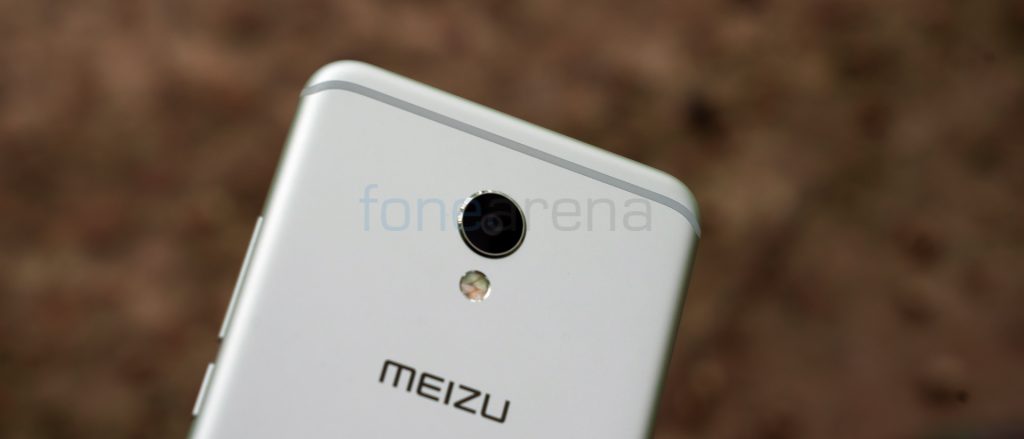
The MX6 is the first smartphone to use the new Sony IMX 386 sensor. It has a resolution of 12 Megapixels and a sensor size of 1/2.9 inches as well as a pixel size of 1.25 microns. In comparison the MX5 had a larger ½.5” sensor size as well as more pixel count with a resolution of 21 Megapixels. Before we get into the image quality and other aspects, let’s also mention that they have removed Laser Autofocus and that is a good thing. Click on any of the samples below for the full resolution samples.
Laser Autofocus is a technology that sounds great on paper and is something that companies used to boast about when it came out initially. However, practically speaking, it fails to perform as fast as PDAF and that’s when we aren’t even taking the S7 series into consideration. Laser Autofocus tends to work well only on certain objects or subjects and then again seems to hunt around a bit too much for focus. So just like we were happy to see OnePlus toss it out of the window with the OnePlus 3, we are glad that Meizu removed it on the MX6.
Image quality on the MX6 is pretty good. Photos captured carry plenty of detail and are vibrant with good dynamic range. This is true especially for the HDR mode, which works beautifully well at extracting details from the shadows much better than most other smartphones on the market. It works great in lowlight shots too where the HDR mode makes everything seem more lively and produces a brighter image overall at the expense of a slightly longer shutter speed. The photos on the top are taken in regular mode while the photos below are taken in HDR mode.
But where it falls short is the low light performance and the noise levels. On paper, the sensor seems small to perform well enough under low light conditions and that is the case in real life too. The sensor has a small size along with a small aperture and a pixel size that really isn’t all that impressive, the low light performance is underwhelming. The images are mostly under exposed and if you want a bright image you’ll have to use the HDR mode. That improves the exposure and makes the image a whole lot more lively. However, there is still a lot of noise and the longer shutter speed leads to object or subject blurring at times.
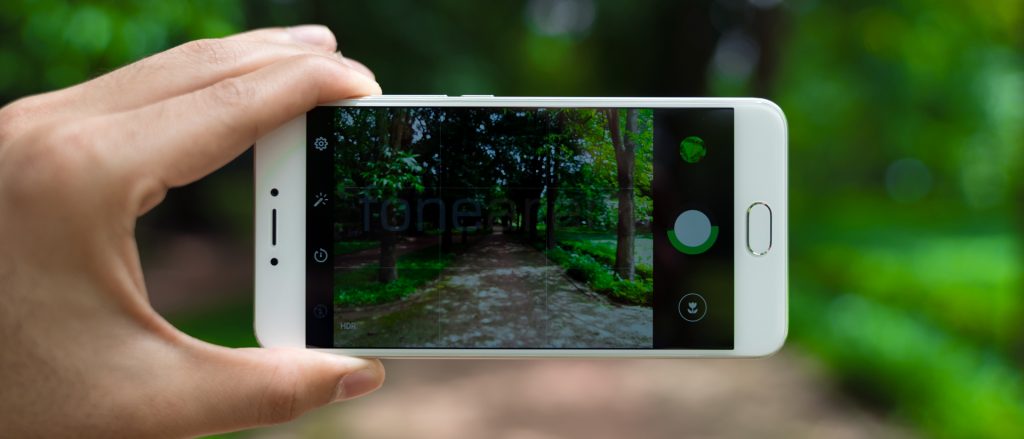
The camera UI is really simple but functional. When held horizontally, the shutter key, gallery preview and mode shortcuts are there on the right size. The shutter key also has a built in level that makes it easier to get the right composition. Users can also enable a photo grid to assist in composing your shots. On the left side, you have the toggles for flash, timer, filters, camera switch and settings. The camera app also supports HDR, manual metering and can be set to add a time mark as well as location if you wish. The different modes available are auto, manual, video, beauty, panorama, light field, slow-mo, scan, macro and gif.
Manual allows users to choose the shutter speed, ISO, focus, exposure compensation, saturation, contrast and white balance. Gif takes videos and saves them in a .gif format while scan is a built-in QR code reader. Light field allows you to change the point of focus after the photo has been taken. The rest of the modes are pretty much self-explanatory.
Audio
The Meizu MX6 offers a loud output when it comes to the speaker. Loud is a relative term and while it does perform much better than the majority of smartphones these days, don’t expect miracles. It is slightly let down by the tiny distortion at the highest volume levels. Audio quality over the earphones are decent but not flagship grade. The output is quite loud though and we suggest increase it as per your need since it can go very high.
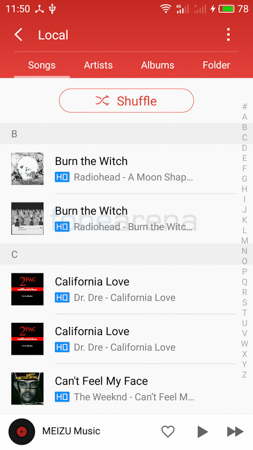

The music player is simple but good enough for the average listener. It comes with different ways to sort your collection based on the track name, album, artist, playlist etc. The now playing screen has the album art, track controls, favourite and shuffle/repeat buttons too.
Battery Life
The Meizu MX6 comes with a non-removable 3060 mAh battery which also supports fast charging through its USB Type-C port. We are currently performing our battery tests on the MX6 and will soon be back with the results.
Conclusion

The Meizu MX6 is a pretty good smartphone at the price point 1999 Yuan (US$298 / Rs. 20,040 approx.). However, I am not sure whether I would recommend it over competitors such as the OnePlus 3 for example. Sure, the OnePlus 3 is costlier and the Meizu MX6 has many things that the OnePlus 3 has but the latter also has several things that the MX6 doesn’t have and that justifies the extra asking price. The MX6 is a good all rounder of a smartphone but it doesn’t really offer something unique or stand out from the rest of the crowd. The MX6 doesn’t have a lot of negatives but it doesn’t have really impressive positives either. Not to mention the fact that the device is also currently available only in China and if people want to get it, it would involve purchasing it and importing. To be honest, I don’t feel its worth all that effort. If and when they do release it locally and say sub 20k, then its perhaps a proposition worth looking at.
Pros
- Beautiful Design and Solid Build Quality
- Great Display
- Good Image Quality
- Fast and Responsive Fingerprint Sensor
Cons
- Noisy Low Light Camera Performance
- Speaker Gets Distorted at High Volumes









